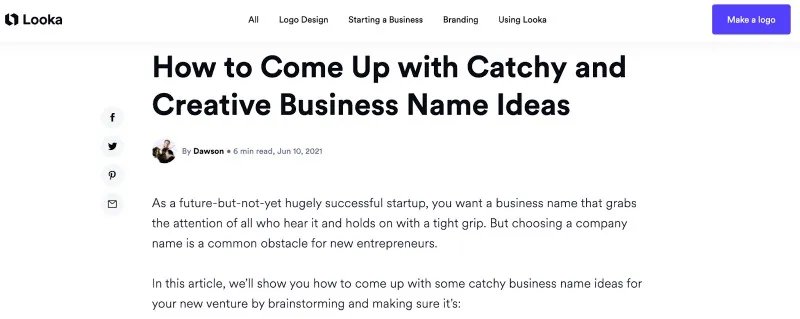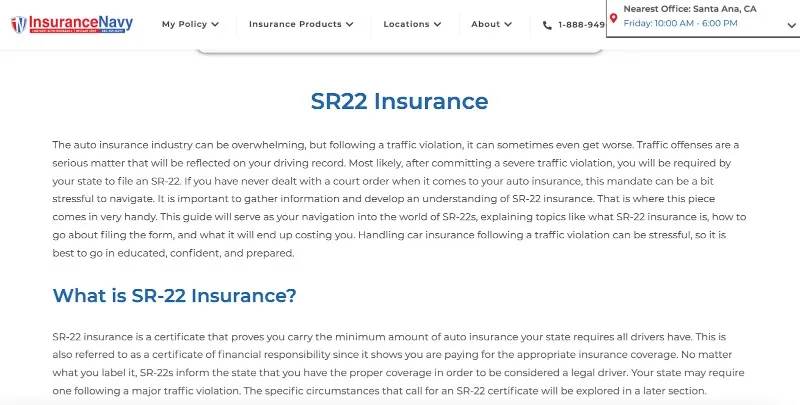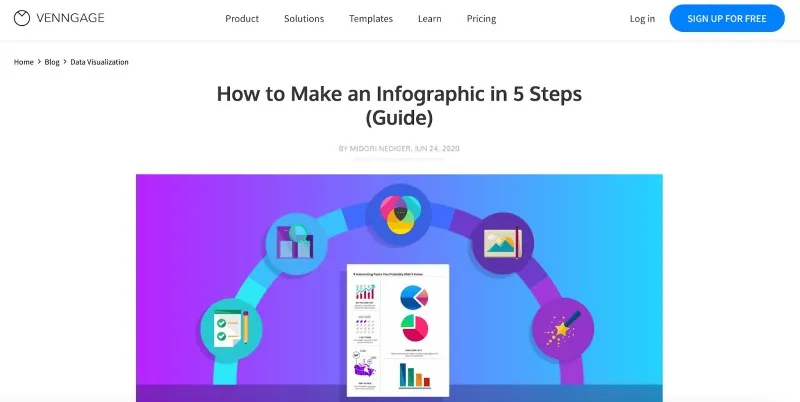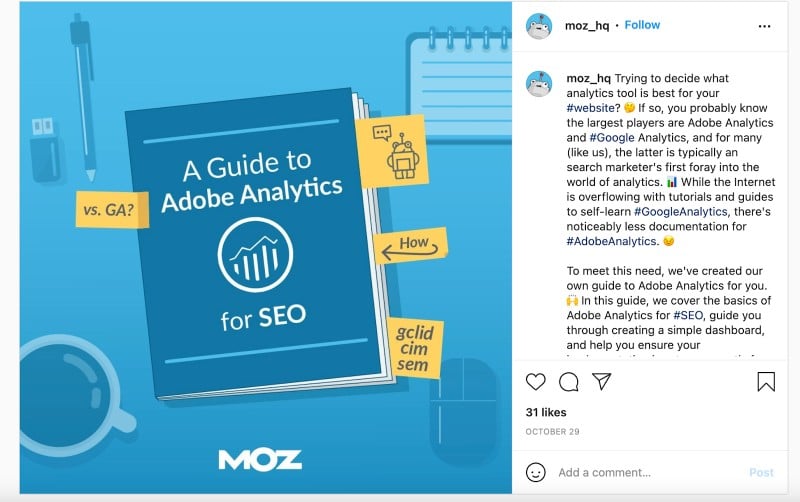Content is a worthy marketing investment! It can help you showcase your products and services, improve your search engine optimization, and ultimately help you draw the best people to your website. Make it your New Year’s resolution to improve your content strategy for 2022!
In this article, we’re going to outline how you can create a top-notch content marketing strategy. Let’s get started.
Audit your existing website content
Before you create more content, you should take a look at what you already have on your website. This means you need to carry out a content audit.
A content audit is the process of collecting and analyzing the content on your website to find out what is working and what isn’t. This can then help you determine what content to create, update, re-write, or delete.
Start by setting your goals. What are you trying to achieve with your content? Are you trying to rise through the ranks of the search engine results pages (SERPs)? Are you looking to retain repeat customers? Drive conversions? Set your goals and be sure that they’re clear and measurable so you can monitor your progress.
Create a spreadsheet of all the content on your website. Organize it with the title, publishing date, and any relevant statistics. For instance, you might want to keep track of your content’s rankings on the SERPs, its number of comments, likes, or the amount of traffic it brings to your website. Be sure to keep track of the number of newsletter sign-ups, page visits, and social shares, too, as these metrics will help you determine how your content is contributing to your overall bottom line.
Once you have all the information you need, it’s time to make a plan of action. Take a closer look at what content topics or article types are performing the best. You might find that your audience is particularly interested in your video content, for instance. This means that you need to create more of this type of content so you can have happier customers!
Make sure you’re conducting content audits on a regular basis — at least a few times per year, if not monthly. This will help you stay on track with your goals.
Find out what your audience wants using keyword research
One great way to generate traffic to your website is through content that contains the most appropriate keywords. Keywords are the words and phrases people plug into search engines when looking for content online. When you incorporate the right ones into your content, you can tell search engines like Google what your website is about and get ranked higher on the SERPs.
Head to a tool like Google Keyword Planner with a list of words and phrases related to your business. Plug them into the Planner, and Google will provide you with a list of keywords based on their competitiveness, or how hard they are to rank for, and their average monthly search volumes. Many of these keywords will work as content topics on their own, but think about questions people have related to these keywords in order to come up with other ideas. If you weave these keywords into your titles, headers, and body copy, you can give Google a better idea of what your website is about and give yourself a healthy SEO boost.
Be sure to weave these keywords into your copy naturally. If you just shove them in wherever they fit, Google will think you’re keyword stuffing — this is a form of spam and cause your rankings to drop instead.
Always try to address customer questions and pain points
By addressing your customers’ questions and pain points with your website content, you can show that you really understand and care about your target audience. This will help you drive more traffic to your website, improve the customer experience, and ultimately lead to more sales!
To identify your ideal audience’s pain points, check in with your customer service team and see if there are any questions they frequently get asked. If you create content based on these questions, not only will you save your employees some time, but you can make your customers feel better understood, making it more likely that they’ll make a purchase with you.
Let’s take a look at a few examples of businesses that create great content based on customer pain points for inspiration.

Looka, an online logo maker and branding company, addresses customer pain points throughout their blog. For example, their article on coming up with catchy business name ideas does several things particularly well. They outline how to come up with a business name, what makes a business name catchy and clever, and more.
People who come to their website are looking to improve their branding and their logo, or may even be in the earlier stages where they don’t even have a business name. By creating this article, Looka can address customer pain points and encourage more people to spend money with their business.
For your website, write content based on questions that your customers have. Think about what initial questions people have before getting started in your industry. If you write content that includes the answers to these types of questions, as Looka has, you can draw new people to your website and encourage them to make a purchase.

Insurance Navy, a provider of non-standard auto insurance, has content on their blog that addresses customer questions, as well. Their article on SR22 insurance covers who needs to get it, how to file for it, and more. This is great for people who aren’t yet sure whether they need the services of Insurance Navy. They can learn more about SR22 insurance and see if it’s right for their needs. Reading this article will help website visitors trust Insurance Navy more and increase the chances of them making a purchase.
On your website, publish informational content about the products or services you offer, as Insurance Navy has. This will help you address the pain points that your ideal customers have and make it more likely that they’ll want to make a purchase with you!

Finally, Venngage, an online infographic maker, has great content on their website, as well. For instance, their article on how to make an infographic is very informative and addresses customer pain points well. In just a few steps, Venngage outlines how to best organize content for an infographic, what colors and graphics to use, and more. This how-to guide is great at drawing people to Venngage’s website and solving their pain points. Plus, people who find this article helpful will quickly learn that Venngage has infographic templates that will solve their problems, making it more likely that they’ll want to use their services.
For your website, write how-to guides that answer common customer questions, as Venngage has. Think about what information people need in order to get started in your field or niche — if you write guides that address these pain points, you’ll build trust with your readers and make them want to make a purchase.
Make sure you have a content calendar to follow
Content calendars offer the best way to plan and organize the content you’re going to publish on your website. They allow you to outline what posts you’re going to publish and when. If you have a content calendar, you can ensure that you aren’t creating similar content or covering the same topics back-to-back.
Keep in mind that you need to publish both evergreen content and timely content throughout the year — mark this in your content calendar to ensure you have a nice balance of both. Evergreen content is relevant no matter what time of year it is, in contrast to timely content, which might be related to a holiday or newsworthy event. Be sure to publish both kinds of content on your website, as people will want to know that you’re a reliable source of all information related to your business.
Ensure you also have a content promotion plan
It’s not enough to just create your content — you also need to promote it regularly so that people see it! This will help you get more traffic to your website and improve your business’s online presence overall. Companies typically promote their content through social media and newsletters — if you do this as well, you can ensure that your followers and newsletter subscribers always know when you have new material on your website. This will draw them back and increase your sales.
Let’s take a look at an example of a business that promotes their content effectively for inspiration.

Moz, a digital marketing company, promotes their content well on their Instagram account. As you can see in the image above, Moz is promoting their new guide to Adobe Analytics. In their post, they note that the guide can help a reader learn about the basics of SEO, how to create an Adobe Analytics dashboard, and more. Additionally, the post notes that this guide is unique — while there are many tutorials and guides for Google Analytics, there are a lot fewer for Adobe! This is a great content promotion strategy that highlights the benefits of their guide as well as how it’s better than others out there.
When promoting your own content, consider mimicking the Moz strategy. Use your social media posts to highlight what your new content is about and why it’s better than anyone else’s. This will encourage people to click and read your content, ultimately increasing your sales!
Once you promote your content, it’s worth checking out your social media and email analytics to see how they’re doing. Websites like MailChimp have built-in analytics tools, as do most social media platforms. That being said, for additional features, you might want to pay for specific analytics tools for Twitter, Instagram, or Facebook.
Summary
Content marketing is one of the best tools you have at your disposal for growing your business. In this article, we outlined how you can create a great content strategy for 2022, including by conducting keyword research, addressing customer pain points in your content, and more.
Take a look at the content you have on your website and see what work needs to be done! It won’t be long before you start to see the results you want.
Author bio
Aaron Haynes is CEO and co-founder of Loganix. The company is an SEO fulfillment partner for digital marketing agencies and professionals, which provides the services businesses need to improve their online visibility and grow. If you liked this article, check out the Loganix blog, where you’ll find more SEO guides full of expert advice.
